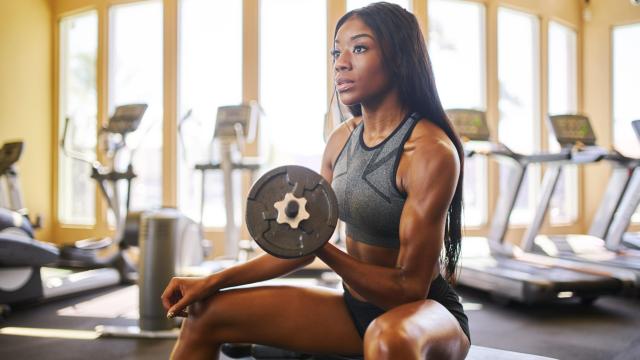You can go through most of your life without worrying about whether and how you’re breathing, but as soon as somebody mentions that you’re supposed to breathe a certain way in the gym, it’s easy to get tripped up. Out when? In when? Oops, I held my breath instead — is that bad?
As with anything else in the exercise world, there are different recommendations for different people doing different things. If you’ve heard conflicting advice, don’t worry, we’ll sort it out.
Should I hold my breath when I’m lifting weights?
OK, so the first big divide on this question is between people who breathe when they lift and people who don’t.
I don’t breathe during most of my lifts. I spend most of my time in the gym doing big compound lifts: squats, deadlifts, snatches, cleans. I wear a belt for most of them. And I brace my core hard while I do them.
For these lifts, the Valsalva manoeuvre is a powerful tool. That’s the fancy name for building pressure in your torso by holding your breath. You’ve probably done it on the toilet at some point.
Between my belt, my braced core, and the pressure of the air in my lungs, I’m doing a lot to stabilise my torso and protect my spine from injury. I’m also able to lift more weight this way than if I didn’t brace or hold my breath. Watch any competitive powerlifter’s face turn tomato-red during a squat, and you’ll know they’re doing it, too.
While this is safe for most people, most of the time, some people shouldn’t hold their breath while lifting for safety reasons. The Valsalva can increase blood pressure temporarily, and it can result in dizziness and even blacking out, especially if you hold the pressure for more than a few seconds. The American Heart Association recommends that beginners and people with cardiovascular disease not hold their breath during lifting. The valsalva is also not recommended during pregnancy, because the increased pressure poses risks to the placenta. (If you have any questions about whether you personally shouldn’t hold your breath while lifting, talk to your medical provider.)
If you do use the valsalva, you’ll hold your breath during each rep, and you’ll stop to exhale and inhale between reps (for example, when you’re standing up in between squats).
If I breathe while lifting weights, how should I do it?
First, there’s not really a wrong answer to how to breathe, but there is a rule of thumb that will help most of the time.
You’ll want to breathe out during the hardest part of the exercise, and breathe in when the exercise is easier. This generally means exhaling during the concentric contraction (lifting the weight) and inhaling during the eccentric (lowering it down). If you forget, just ask yourself which part of the exercise is hardest.
So let’s say you’re squatting. You can breathe in while you’re lowering yourself down, and then breathe out while you’re on the way up. The hardest part of the squat — the sticking point, it’s often called — is just after you start going up.
How about a deadlift? The hardest part of the movement is while you’re lifting the bar up, so exhale there. You can inhale while you’re lowering the bar down.

Leave a Reply
You must be logged in to post a comment.